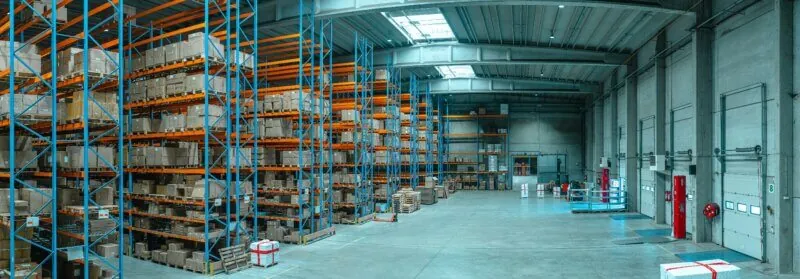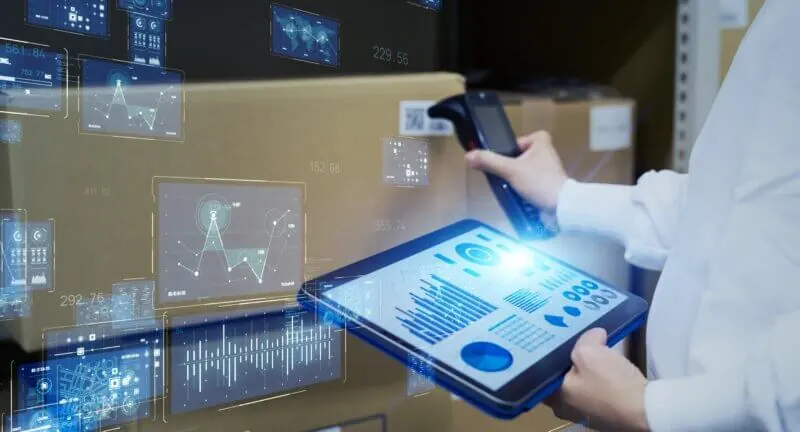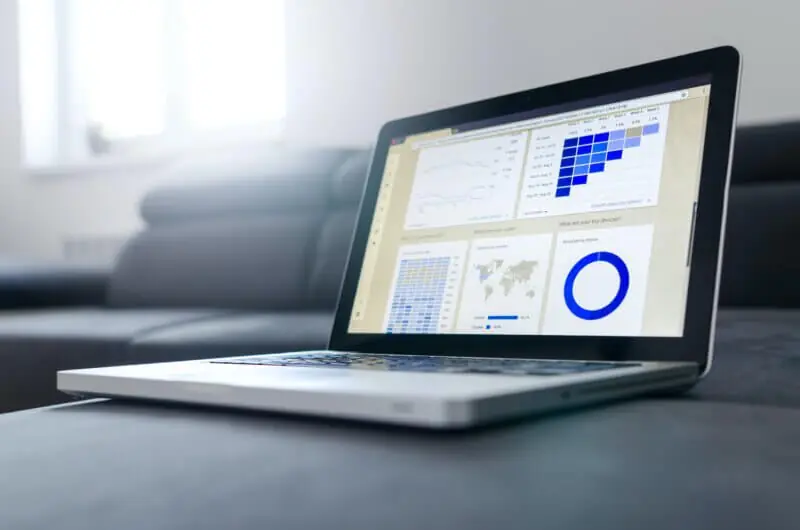New Product Launch: ClimateLens Monitor Yield Outlook - see regional and location-specific yields on key commodity crops, updated weekly.Learn More
Meredith Mejia • September 6th, 2023.
Being among the top contributors of pollution and greenhouse gas emissions, food and beverage producers around the globe are feeling the heat to create sustainable supply chains and green production methods.
Changing consumer sentiment sparked by a growing awareness of ethical and environmental injustices is pushing the food and beverage industry in a more eco-friendly direction. On top of that, climate change is already impacting food security, pressuring food supply chains to become resilient enough to weather the storm.
By leveraging technology and embracing transparency, the food industry can achieve a greener future. But what’s standing in the way?
A sustainable supply chain aims to limit its impact on the environment from start to finish. This stretches from the fields to the refrigerator, meaning each participant, or link in the chain, is transparent about using ethical and environmentally-friendly procedures and held accountable by its partners. Supply chain sustainability has a great deal to do with climate resiliency: the ability to bounce back from and reduce damage from climate-related events. Any system that crumbles easily will not last long.
From the production of raw materials to packaging plants and last-mile shipping, each link of the chain must promote environmental sustainability goals and fair labor practices to be truly sustainable.

In 2021, California’s southern ports reached record backlogs; thousands of containers sat in the bay for weeks with no labor to unload them. This exacerbated container shortages in China, an already strained system. Consumers saw empty and scantily stocked shelves for months.
In 2022, droughts in Spain and Portugal were so severe that they lost 60%-80% of crops, contributing to global grain shortages and food scarcity in Africa and the Middle East. Things aren’t looking up for Spain; 2023 has been the driest year yet in Andalusia.
These cases highlight the importance of water sustainability and sustainability in supply chain management. Let’s take a look at what hurdles the food and beverage supply chain is facing on the road to supply chain sustainability.
There’s no arguing that sustainability and the supply chain don’t have extreme, far-reaching consequences. So why are the solutions so elusive? Roadblocks seem to appear at every level of the chain.
For a long time, supply chains have been fragmented, that is, spread out between multiple suppliers and producers. Transparency means giving up your valuable strategies and surrendering any leg up you have on competitors.
Transparency also refers to the fact that while high-tier and mid-level companies are in contact with each other, the man at the top isn’t always sure who’s supplying goods at the lowest level. This makes it hard to communicate internally as well as to consumers that all parts of your operations prioritize sustainability in supply chain systems.

Participants are dealing with partners from many countries with many different levels of regulatory severity. Executives could require partners to follow green supply chain standards, only to find out that their partners down the line have zero ethical policies. It’s incredibly difficult to enforce standards when it’s clear not everyone’s on board and regulations vary from partner to partner and country to country.
Transitioning to sustainable food supply chain management involves investing resources into robust data collection, reporting, and skilled sustainability professionals to spearhead the effort. Altering procedures to limit environmental impacts requires upfront costs that already struggling suppliers struggle to afford.
Despite the setbacks, there are profits to be made from revamping the global food supply chain. By leveraging new technologies like AI and modern databases, the food and beverage industry will become stronger and more resilient. Let’s take a look at the benefits of sustainability in the beverage industry.

Operating costs like fuel consumption, transportation, energy use, and raw materials stand to be minimized by building greener systems. Green packaging can lower production costs by eliminating material waste. Warehouses powered by clean energy reduce operational costs in the long run, lowering bills and working toward stricter supplier sustainability mandates on the horizon.
Sustainability is the ability to endure the long term. Longevity isn’t possible without the ability to adapt to changing norms and recover from climate and economic-related blows.
Sustainable food chains are diversified, risk-aware, and strategically planned. Areas of weakness and opportunities for improvement have been assessed, giving businesses the tools to mitigate exposure to physical, financial, or reputational damage.
In an effort to reach the UN’s 2030 sustainable development goals, nations are tightening rules on emissions and pollution. Supply chain sustainability is in the spotlight, targeted by many of these regulations because of its history of wastefulness and recent failures due to COVID-19. Corporations can transition toward compliance using agritech, smart sensors, and machine learning to avoid possible penalties.
The ability to boast and verify ethical operations opens doors to new investment opportunities and partnerships. Sustainable supply chain management has never been more valuable, and big players want quality partners who will strengthen their image.
Half of U.S. consumers are willing to change their buying habits if it means being more eco-friendly. A whopping 75% of millennials are definitely or probably doing so. This tells us that even if food and beverage sustainability means higher price tags, consumers will foot the bill.
Companies that can advertise organic and non-GMO ingredients, biodegradable packaging, or net zero shipping have access to a wider pool of shoppers than they did 10-15 years ago. This level of commitment legitimizes business in the eyes of the public and strengthens branding efforts.
The food value chain (FVC) is made up of participants in the growing, manufacturing, and value-enhancing processes required for food product creation.
Striving for change at each level of the food supply chain, sometimes transforming it completely, is the way to accomplish true supplier sustainability. The goal is not only to minimize negative externalities but to prepare for a future of climate change.
Sustainable food chains are transparent. Details from growers, suppliers, and manufacturers are upfront and truthful regarding their environmental impact and compliance record. Each distribution center has documentation on product movement, be it raw materials or packaging. Supply chain members should cooperate and communicate about their efforts to improve labor practices, energy use, and combat corruption. Because food supply chain issues are so diverse, it takes a commitment to transparency to address them effectively.
Green supply chains work with partners who prioritize environmental sustainability, ethical sourcing, and social responsibility. This means investing in infrastructure that optimizes and limits energy usage and damages the surrounding environment as little as possible. Environmentally friendly shipping methods like trains and round-trip programs reduce fossil fuel use. Eco-friendly packaging, be it biodegradable or reusable can prevent further build-up of single-use plastics. Participating in composting programs helps farmers maintain soil health while eliminating food waste.
Circular supply chains aim for reusable and recyclable materials to be returned to the production or consumption systems. Products and packaging are designed to enable easier disassembly, repair, and recycling.
Circular also encompasses the reverse logistics process that recovers some value of a product for continued use. Examples include return programs for aluminum coffee pods, return incentives for old electronics, and partnerships with local food banks to take extra or rejected products. Focusing on this type of sustainability in supply chain operations hasn’t always been the center of conversation, we’ll be seeing far more of these programs in the future.
Establishing longevity and sustainability in supply chains means equipping them to withstand weather-related disasters like flooding, droughts, and wildfires that are becoming more frequent. Using seasonal climate forecasting and predictive technology, the F&B industry can strategically position warehouses and factories away from danger, choose more efficient crop placements, and protect inventory from inevitable disruptions.
Food producers can generate unique solutions that simultaneously reduce costs and pollution. The road to sustainable supply chain management involves creative problem-solving, combining green standards and ethical principles to intertwine sustainability and the supply chain.
The outcome is a supply chain that meets the demands of consumers, business partners, and the changing climate.

By setting clear objectives toward an end-to-end supply chain transformation, companies can align their operations with environmentally conscious practices using measurable goals and metrics. These goals provide a roadmap to reduce waste and optimize resource utilization, ensuring that supply chains remain well-equipped to meet the challenges of the future. Long-term goals align the common goals of sustainability and the supply chain, keeping all stakeholders on the same page.
Designating a man in charge means someone is accountable for creating and executing the sustainable supply chain strategy. A huge setback companies face is no continuity of tracking progress and no cross-departmental unity. Create a scale for rating partners on sustainability, generate quarterly emissions reports, or announce goals for transitioning to renewable energy by a certain date.
The keyword here is chain; each participant in the chain should be working toward sustainable supply chain management, not just one link. Accountability extends pressure down the line. Tier 1 suppliers improve and request tier 2 suppliers to do the same, continuing down the line to the lower-level producers who are often the worst offenders.
Transitioning is smoother if we take advantage of technological advances designed to streamline sustainable supply chain strategies. Embracing innovations that optimize water usage and resource consumption takes some of the burden off of executives. Platforms like ClimateAi allow businesses to leverage machine learning to more accurately identify climate-smart opportunities.
Ai can be applied to any realm of business to make more accurate predictions and simulate human actions. In some ways, the past is no longer a reliable predictor of the future, and we can’t de-risk supply chains using outdated data.
Here are a few ways that AI can facilitate supply chain sustainability in the food industry.

Beyond supply chain sustainability, AI can do the data analysis for you, providing insight into customers’ buying habits. Using weather-adjusted data from multiple sources, AI can enhance sales and marketing strategies, getting a leg up on the competition ahead of market-altering events. As a result, AI-driven insights foster strategic decisions that resonate with customers and position businesses as market leaders.
AI emerges as a game-changer in demand planning and optimization. Through sophisticated data analysis and predefined algorithms, AI can discern consumption patterns and market trends, refining demand forecasts. This empowers companies to maintain inventory levels, minimize surplus, and meet customer demands efficiently. This helps strengthen sustainable supply chains by reducing waste and avoiding unnecessary shipping.
By automating complex tasks and processes, AI streamlines operations, reduces errors, and enhances productivity. Machine learning can identify bottlenecks and suggest process improvements for manufacturing sites and distribution centers. It also enables predictive maintenance, foreseeing equipment issues before they disrupt workflows.
By automating complex tasks and processes, AI streamlines operations, reduces errors, and enhances productivity. Machine learning can identify bottlenecks and suggest process improvements for manufacturing sites and distribution centers. It also enables predictive maintenance, foreseeing equipment issues before they disrupt workflows. This facilitation of smooth operations increases supply chain sustainability by decreasing the overall ecological footprint while ensuring consistent product availability.
AI can analyze vast datasets and historical trends, identifying potential risks and vulnerabilities across various operational facets. AI-driven simulations allow for scenario planning, diving deeper into each location’s exposure. This type of advanced risk management improves the long-term resilience of physical assets and overall supply chain sustainability.

While these businesses are by no means perfect, they have excellent goals in place and have achieved impressive green supply chain management goals. Each case study has aspects that can be used to learn about transparency and accountability.
Here are a few sustainable supply chain examples that we find encouraging.
Nestle is a food production mega-corporation with highly complex international supply chains. They have reached significant greenhouse emission reductions by focusing on renewable energy efforts.
Nestle’s key accomplishment is transparency. They have disclosed all suppliers, a huge step forward in reaching sustainability in the often secretive food industry.
Since 2015, Coca-Cola has reduced emissions by 7% toward its goal of a 25% reduction in 2030. They’re on our list of sustainable supply chain companies because of their accomplishments toward circularity. They built a 100% plant-based plastic bottle technology (still in beginning stages) and aim to collect and recycle a can or bottle for each sold by 2030. They are greening the supply chain one bottle at a time.
Danone is one of many sustainable supply chain companies promoting sustainable agriculture. They’re contributing to greening the supply chain using eco-friendly initiatives, aiming to reduce methane emissions from milk production by 30% in 2030 and restore soil so that it can absorb more carbon and retain more water.
“Greening” the supply chain is the collective job of consumers, corporations, and governments. Through stakeholder collaboration, long-term goal commitment, and embracing data-driven decision-making, we can overcome the hurdles and pave the way for a more ethical global supply chain.
ClimateAi is spearheading the technological side of turning the supply chain green. By helping businesses climate-proof their operations, we emphasize the monetary advantages of sustainability.